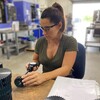
[ad_1]

A sign asking patrons to wear a mask is seen at the entrance of a restaurant in New York City on Aug. 3. The spread of the delta variant is expected to have led to sharply slower economic growth in the July-to-September quarter.
Kena Betancur/AFP via Getty Images
hide caption
toggle caption
Kena Betancur/AFP via Getty Images
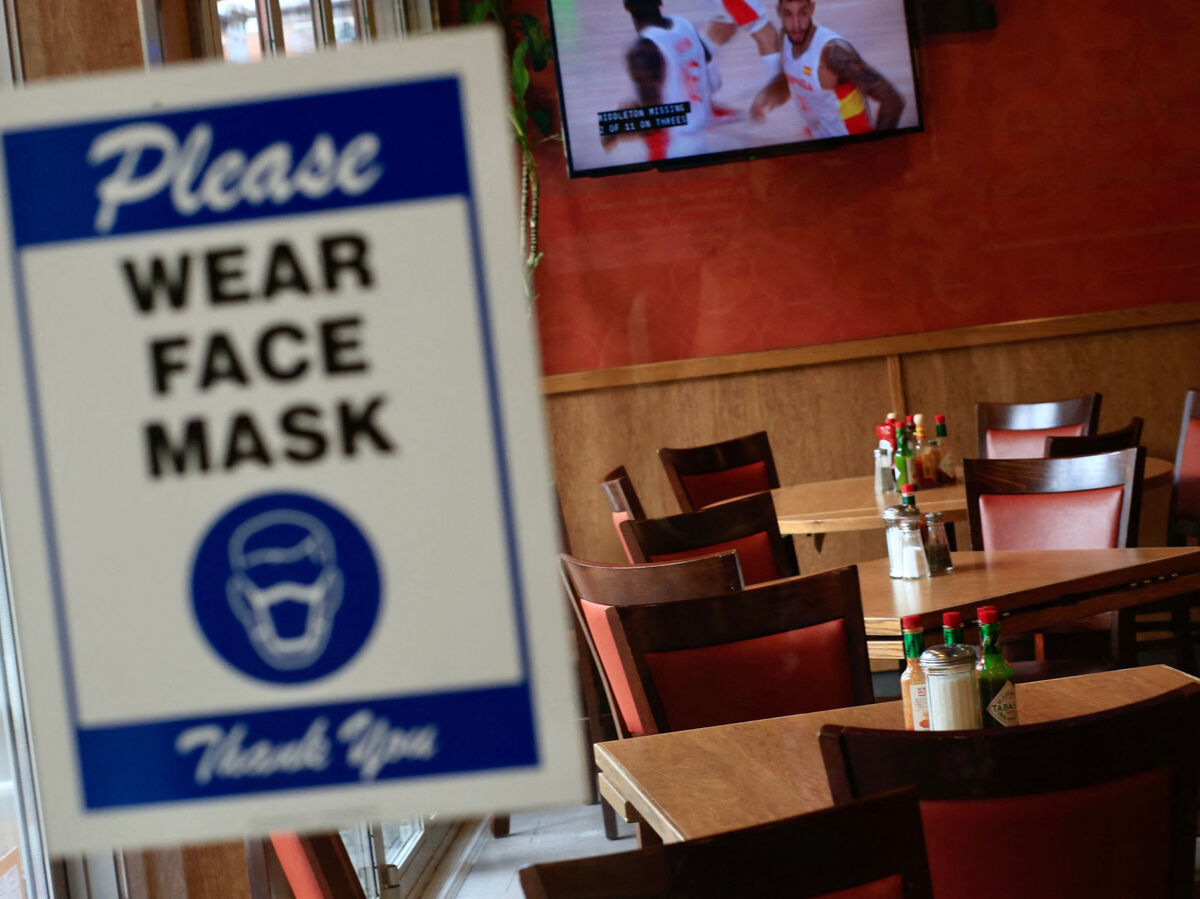
A sign asking patrons to wear a mask is seen at the entrance of a restaurant in New York City on Aug. 3. The spread of the delta variant is expected to have led to sharply slower economic growth in the July-to-September quarter.
Kena Betancur/AFP via Getty Images
On the Fourth of July, the U.S. economy looked ready to skyrocket.
“We’re seeing record job creation and record economic growth,” President Biden said then as he encouraged Americans to celebrate their newfound independence from the coronavirus pandemic.
By Labor Day, however, the economy looked more like a dud, its midsummer sparkle smothered by a wave of delta variant infections and persistent supply chain problems.
Third-quarter economic growth, as reported by the Commerce Department on Thursday, is expected to be less than half of what it was in the spring quarter.
But there’s room for hope: The health outlook is improving, and forecasters believe it could set up the economy for stronger growth in the last three months of the year.
“We’ve lost a step here, but I think we’re going to get a lot of steps back pretty quickly,” says Mark Zandi, chief economist at Moody’s Analytics. “This highlights how tethered the economy is to the pandemic. It’s still driving the economic train.”
A quarter of two halves
The pandemic has had an unprecedented impact across the economy, and few periods have illustrated its ups and downs as dramatically as the slowdown in late summer and early fall.
Heading into July, the economic train was chugging along at a healthy clip as the nation’s gross domestic product grew at an annual pace of 6.7% in the April-to-June period.
“It looked like the recovery could only get stronger,” recalls Ben Herzon, an economist with the forecasting firm IHS Markit. “Coronavirus case counts were low and declining. People were making plans to go back to work.”

President Biden and first lady Jill Biden, along with other Biden family members, pose for a selfie as they watch a fireworks display during a barbecue event at the White House on July 4. Hopes about the economy on Independence Day were dashed by the spread of the delta variant and supply chain woes.
Alex Wong/Getty Images
hide caption
toggle caption
Alex Wong/Getty Images

President Biden and first lady Jill Biden, along with other Biden family members, pose for a selfie as they watch a fireworks display during a barbecue event at the White House on July 4. Hopes about the economy on Independence Day were dashed by the spread of the delta variant and supply chain woes.
Alex Wong/Getty Images
Restaurants and airlines that were pummeled by the pandemic in 2020 hoped to cash in, as Americans dined out and booked overdue vacations.
Employers added more than a million jobs in July, including 57,000 in manufacturing.
“Everybody was looking at this pent-up demand coming in and chasing business,” says John Gessert, who runs a toy manufacturing company in Walled Lake, Mich.
It didn’t last. Job growth slowed by nearly two-thirds in August. September’s job gains were smaller still.
“Delta happened”
There’s no mystery about why a soaring economy suddenly slumped.
“What happened was, delta happened,” Federal Reserve Chair Jerome Powell told reporters last month.
As infections, hospitalizations and deaths tied to the coronavirus variant mounted in late July and August, people spent less money on in-person services and many shelved plans to go back to work.
“Delta did a lot of damage,” says Zandi. “It made consumers more cautious, so travel fell off. People went to restaurants less often. It rescrambled the global supply chains.”
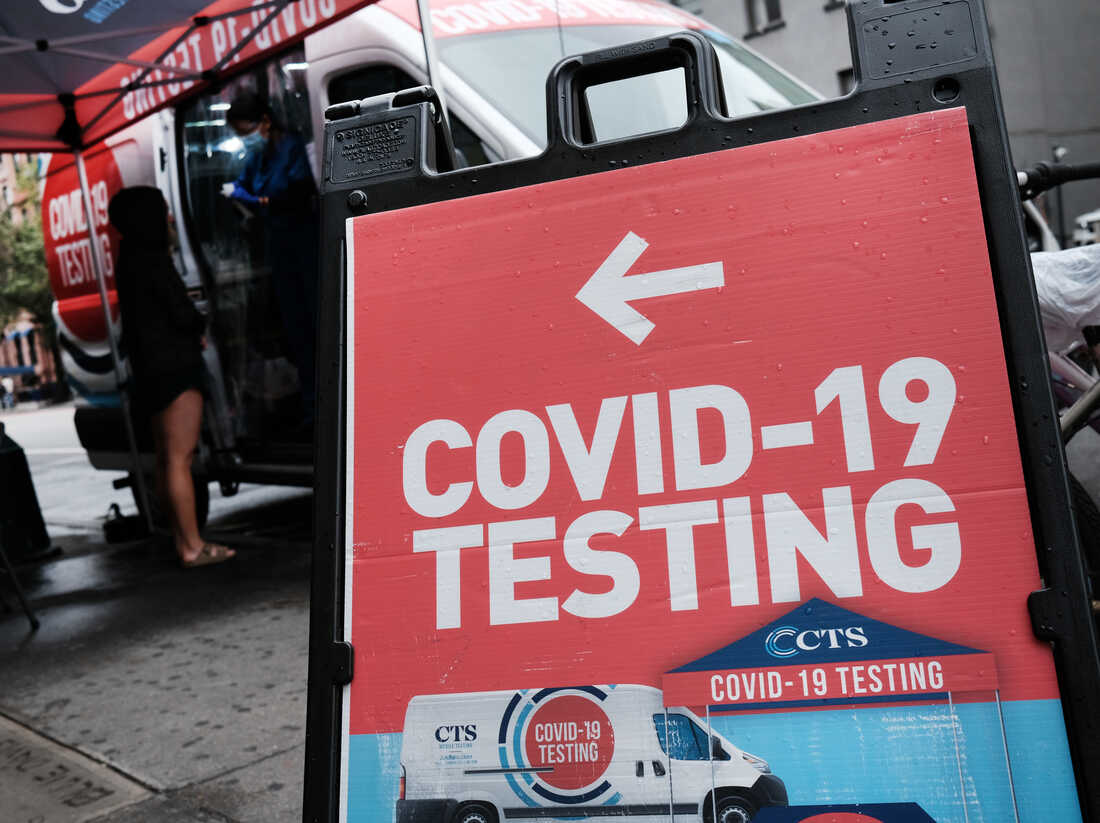
A coronavirus pop-up testing site stands on a Manhattan street in New York City on Oct. 26. Delta variant infections are decreasing, spurring hopes for an economic recovery in the last three months of 2021.
Spencer Platt/Getty Images
hide caption
toggle caption
Spencer Platt/Getty Images
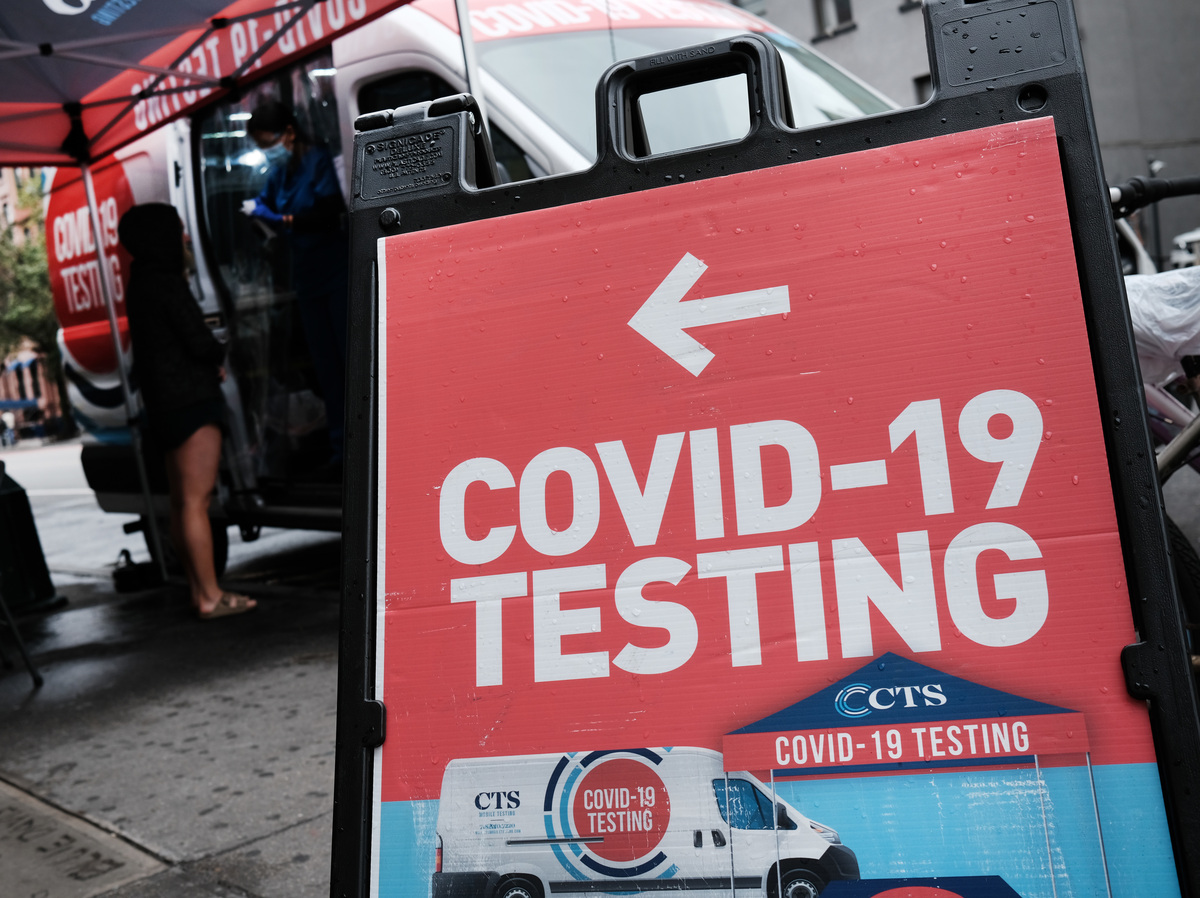
A coronavirus pop-up testing site stands on a Manhattan street in New York City on Oct. 26. Delta variant infections are decreasing, spurring hopes for an economic recovery in the last three months of 2021.
Spencer Platt/Getty Images
In tourist-dependent Las Vegas, visitor traffic dropped 9.2% between July and August and another 2.1% in September.
“It definitely would have been a lot more people here if it wasn’t for the delta variant,” says Precious Briggs, an unemployed server who’s waiting to be called back to work at the Palace Station casino.
While some businesses were hurting for customers, others struggled to find workers. Millions of potential employees were either out sick with COVID-19, staying home for fear of catching it or busy caring for loved ones who were sick.
“The challenge for us has been getting enough drivers,” says Angela Eicher of the Nitetrain Coach Company, which provides bus transportation for touring musicians. “We have had a couple of drivers contract COVID while they were out on the road. We’ve had a couple contract COVID while they were at home.”
Gessert’s toy company, which typically employs about 300 people in Michigan and Mississippi, has been limping along with 230.
“We’ve had to limit molding hours because we don’t have enough people to put the parts together,” Gessert says.
No onion rings and no cheese sticks
The lack of workers has contributed to — and been compounded by — a shortage of materials.
The plastic resin that Gessert’s company uses to make toys has doubled in price, and even cardboard packaging has sometimes been hard to come by.
“What used to take a week now takes two to three weeks,” Gessert says. “That’s the frustrating thing. We could have done a lot more business had plastic not gotten so expensive and had we been able to hire people.”
The Tackle Box 2 restaurant and boat ramp on Ohio’s Sandusky River had plenty of traffic during the summer. But keeping customers fed was a challenge.
“Onion rings. Cheese sticks. There’s stuff I just can’t get,” says Sereta Stephens, whose father started the restaurant 30 years ago. “If I order it today, it might be here next week or it might be in two weeks.”
Consumer spending held up reasonably well during the quarter, thanks in part to federal aid payments that padded savings earlier in the year. But consumers might have bought even more stuff had it not been for delivery delays and shortages.
“It’s great to say that people have money to spend. But unless they have things to spend it on, it doesn’t really translate back to the economy,” says chief economist Nela Richardson of the payroll processing company ADP.

A truck drives past cargo containers stacked at the Port of Los Angeles, the nation’s busiest container port, on Oct. 15. Supply chain woes are expected to persist well into next year.
Mario Tama/Getty Images
hide caption
toggle caption
Mario Tama/Getty Images
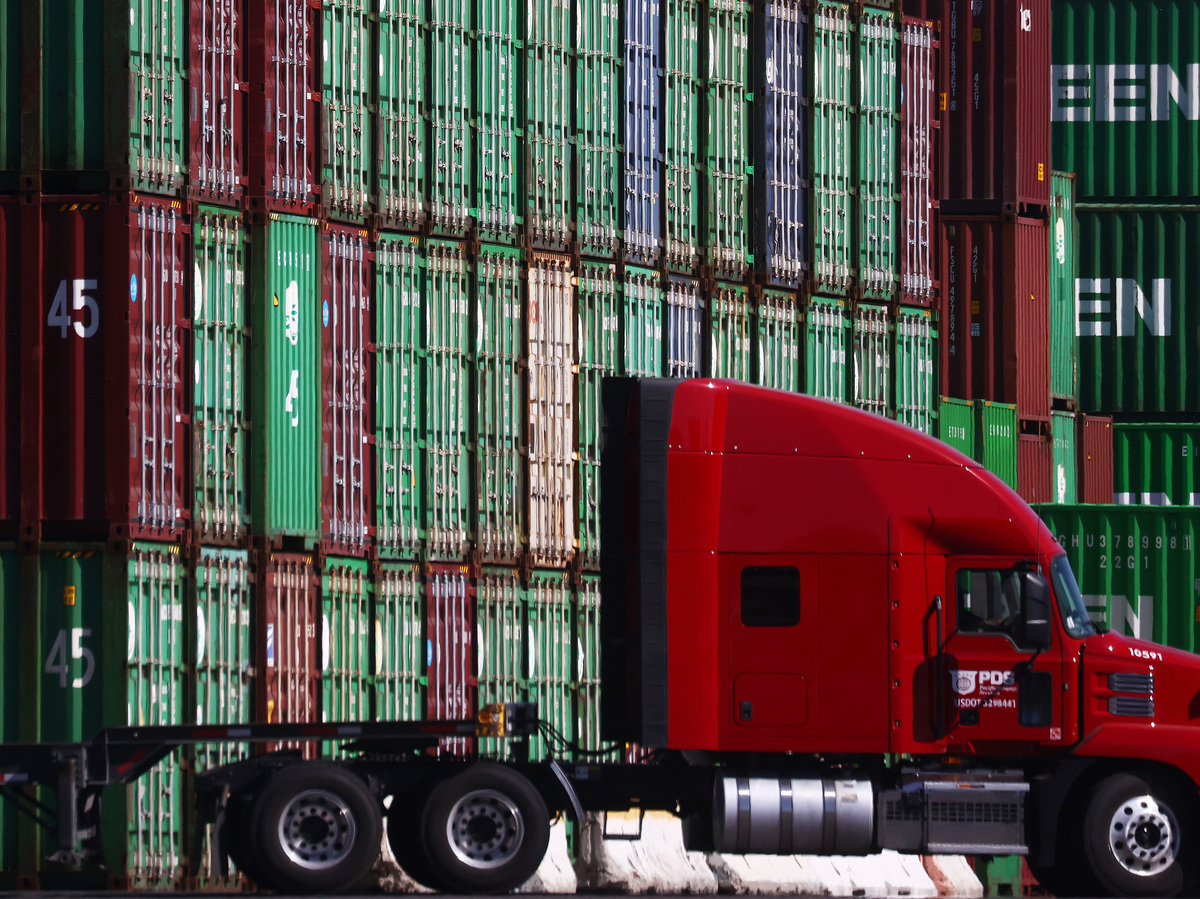
A truck drives past cargo containers stacked at the Port of Los Angeles, the nation’s busiest container port, on Oct. 15. Supply chain woes are expected to persist well into next year.
Mario Tama/Getty Images
But there’s hope about the road ahead
While third-quarter growth is disappointing, forecasters expect GDP to pick up in the final months of the year.
Coronavirus infections have dropped nearly 60% since early September. And as the health outlook improves, restaurant dining, air travel and in-person entertainment have already started to rebound.
Winter is typically a slow season for touring musicians, but Nitetrain’s bus schedule is booked solid for November.
“People are eager to go out and see some live music,” Eicher says. “Also, I think the musicians are ready to be out playing live music again in front of crowds.”
Herzon thinks the economy will grow at an annual rate of nearly 5% during the last three months of the year — slower than in the spring but much stronger than during the late-summer bust.
“Consumers are spending, and that’s a good sign,” Herzon says. “As long as businesses can learn to manage their supply issues, then growth can pick up.”
The strength of the recovery will also depend on how quickly would-be workers — some of whom were sidelined by the delta wave — decide it’s safe to reenter the workforce.
“I think the biggest question out there right now is, where are all these missing workers?” asks Richardson. “How long will they stay missing, and what will entice them to come back to the labor market?”
She expects stronger job gains this winter than in August or September but doubts employers will add a million jobs a month, as they did in July.
“We’ll likely see progress, but it will be continued choppy progress. And it will be dependent on the containment of the virus,” Richardson says. “People’s confidence in the economy right now is tied to health conditions.”
[ad_2]
Source link


